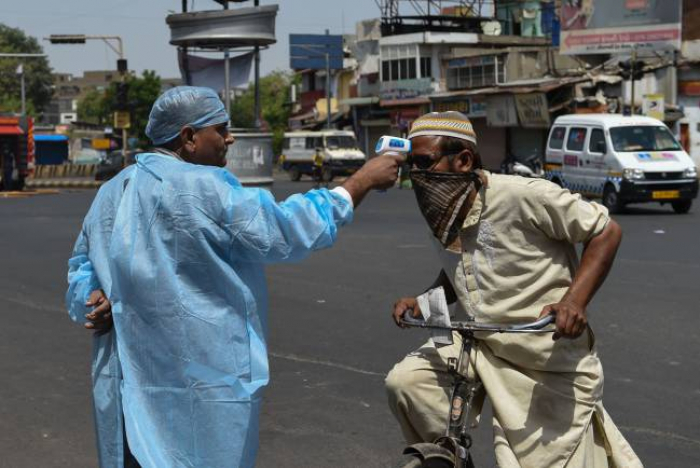India has become only the second country in the world to cross 10 million confirmed Covid-19 case, with the last million added in about one month despite a significant drop in new infections in recent days.
More than 20,000 new infections were recorded on Saturday, although the government insists the country’s proportion of active cases to recoveries is relatively low and falling.
Health experts say that while daily infections are considerably down on a peak of almost 100,000 a day, India must be on its guard for a rebound in the new year as fatigue with public safety measures spreads through the population.
Speaking to The Independent, one of the country’s leading virologists Dr Shaheed Jameel points out that the media hype around vaccines could do more harm than good in the short term, with the perception that a solution to the crisis has already arrived.
“The vaccine is no silver bullet even when it comes,” he said. “Masks have proven to be good protection against the virus, therefore people have to [continue] to wear them, whether you get the vaccine or not.”
Experts said personal adherence to protocols like mask wearing, distancing and hand washing were more important now than ever, as community-wide restrictions have been eased almost completely to help the country’s economy get back on its feet.
Nine months into the pandemic, mask fatigue is becoming a real issue especially in rural areas, where despite strict national emergency laws it is very common for maskless crowds to gather on any given day, at markets and homes.
“There is a mask fatigue in people but that should be handled by the government building trust in the community through communication,” said Dr Jameel. “This happens when people feel that wearing mask is coming in their way of livelihood. It is one cost versus the cost of another.”
With India having a total population of more than 1.3 billion, there’s no guarantee that the trend we are currently seeing with a reduction in infections will continue.
“It is difficult to know if this slowdown would be a lasting effect because other countries like South Korea and Singapore have shown spikes in cases after a relative lull,” Dr Anant Bhan, a researcher in global health and policy told The Independent.
“There is always a possibility that there can be a spike because many people in country have not been infected yet,” he said.
India imposed overnight the world’s largest and strictest national lockdown in March, a move which invited criticism for the Narendra Modi-led government because of the way it forced millions of migrant labourers to leave major cities in a dramatic and deadly mass exodus.
The bruising experience makes a new national lockdown unlikely, and Dr Bhan suggests the government should look to local solutions to prevent another surge in cases in 2021.
“The cases are now spreading in rural pockets of the country and it would be a challenge as we do not have adequate testing and infrastructure in rural areas. We might not know what is the real (case) burden in these areas,” he said.
Despite the uncertainty over the true figures, some experts do feel India has genuinely turned a corner with its pandemic trajectory.
K Srinath Reddy, president of the Public Health Foundation of India, said there had been a “stable decline” in cases since September and the worst fears for another wave were yet to materialise. “The huge surge that we were expecting during winters has not been seen yet and even after festive season in India the rise in cases was not to the extent anticipated,” he said.
The reason India’s new case numbers have slowed down, even as the economy has been opened up, is unclear.
Lack of reliable testing is a possible factor. While Mr Modi has publicly called on the country to prioritise testing and contact tracing to combat coronavirus, there have been questions since the beginning of the pandemic over how well this has been carried out in practice.
After an initial struggle to access expensive testing kits, India was credited with rapidly scaling up its operation, which in turn led to a rise in cases. But even now its testing rate per million people is low, standing at 113,004 compared to Russia on 574,577, the US on 677,774 and the UK on 712,544.
Dr Jameel said the absolute number was now above WHO guidelines – but a bigger problem was India’s increased dependence on cheaper, less accurate rapid antigen tests (RAT).
“You may be doing enough tests, but not counting enough (infected) people,” he said. “India has been doing RAT tests which are not highly sensitive, their efficacy is only about 50 per cent, which means if you test 100 (infected) people you will detect only 50 positive cases.”
He said that the only way to know the accurate numbers is through sero surveys, testing the blood of a large sample group to monitor trends in the prevalence of Covid-19 antibodies.
By this measure, India has not had 10 million infections – but up to 200 million, Dr Jameel said. “That does not mean so many people are infected with the disease (now),” he added.
The Independent
More about: India
















































